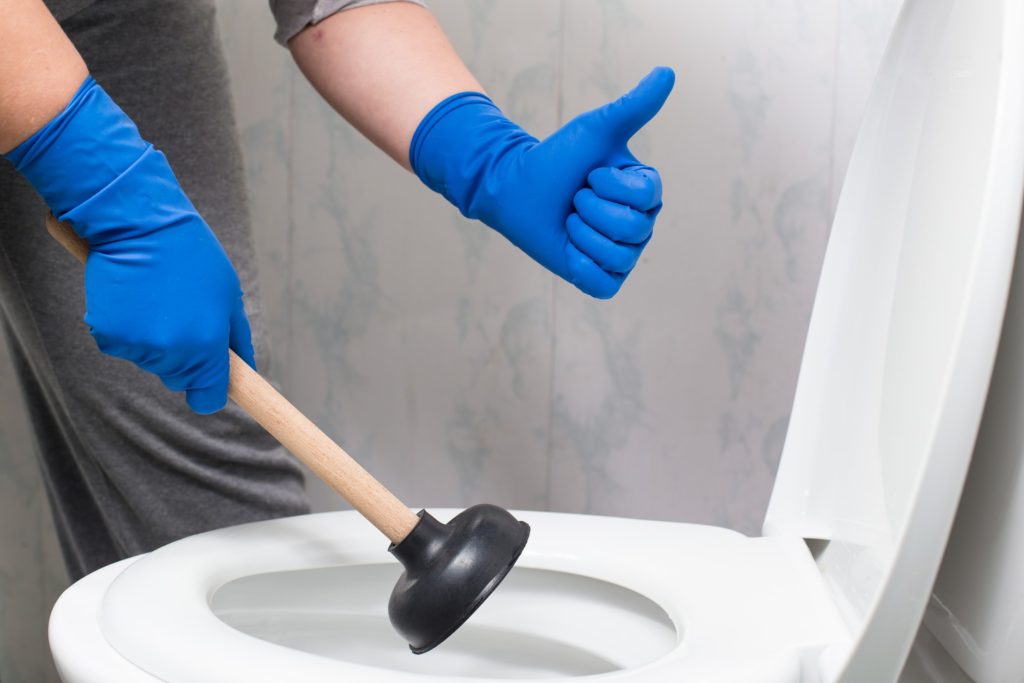If there’s one household fixture that we rely on the most, it’s the humble but ever-so-necessary toilet. It’s also a fixture prone to acting up here and there, regardless how careful one might be. But because toilets have a simple design, many problems can be fixed with nothing more than a little know-how and perhaps a basic tool or two.
Here are 4 common toilet troubles every homeowner is bound to encounter and how to overcome them.

1. Toilet Bowl Overflowing
We’ve all been there. You flush the toilet but nothing budges. Or worse, panic washes over you as you watch the water rise to the top of the bowl. A clog is one of the most common problems but often quite simple to remedy. All you need is a quality toilet plunger. Remove some of the water if it’s dangerously close to overflowing. Then insert the plunger into the bowl to form a seal at the bottom opening. Use a rhythmic push-pull motion and give it 8 to 10 pumps to create pressure in the drain. A tougher clog may require two to three attempts to get things moving again.
2. Wiggly Toilet Handle
If you depress the toilet handle but feel no resistance, the chain inside the tank has either come loose or the nut that secures the handle to the lift arm is loose. First, shut off the water supply to that toilet, remove the tank cover, locate the chain connected to the flapper and pull it up to drain the water from the tank. If the chain has come loose, reattached it or replace as needed. Chain intact? Check the nut and use your fingers to retighten until it’s snug. Then turn the water supply back on so the tank refills with water. Do a test flush to make sure the handle is working normally again.
3. Water Running into the Bowl After the Tank Has Refilled
The cure might be as simple as jiggling the handle. But if that doesn’t cut it, or you’re jiggling the handle far too often, you may need to replace the flapper. The flapper provides a tight seal in the drain located at the bottom of the toilet tank and is designed to settle back into place after every flush. However, over time the rubber can harden and deteriorate, no longer fitting snuggly into the drain. Turn off the water supply and lift the flapper by the chain to drain the water. Remove the flapper, making a note of how it’s connected. Take it to a home improvement store so you get an exact match and install the new flapper.
4. Toilet Flushes Partially
This is another situation where either the chain or the float may be at fault. If the toilet starts to flush but stops halfway and you must keep the handle pressed until the process is completed, the chain may be loose, or the fill valve may not be allowing enough water to enter the tank. First, check the chain and remove any slack. If that doesn’t solve the issue, check the fill valve. The water should be no less than a half inch from the top of the overflow valve (the cylinder the flapper connects to). Locate the fill valve and its adjustment screw on the side near the top. Use a screwdriver to turn slightly one way or another to adjust the water level inside the tank. This might take a little trial and error to get it just right, but it’s worth the time and effort.
As you might expect, not every toilet problem lends itself to DIY repair. Sometimes a pro is needed, and always ready to help is Eagle Service Company, from more complex repairs to replacement toilets. We also have the experience and tools needed to unclog any toilet, no matter how severe the problem. Contact Eagle today for toilet repair or any other home plumbing need.


